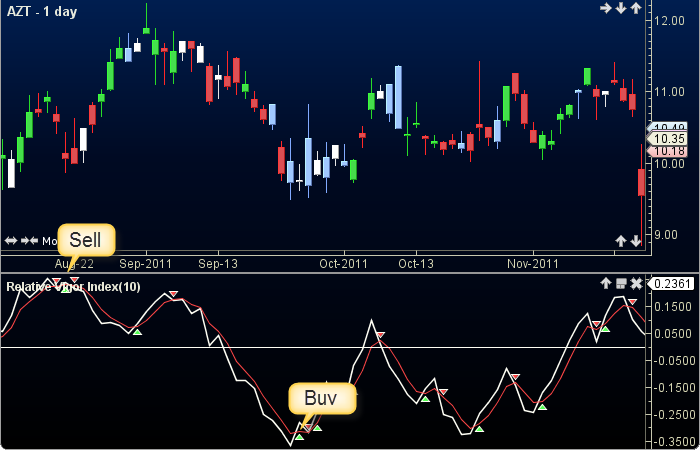Relative Vigor Index
The Relative Vigor Index (RVI) assumes the premise that, in a bull market the closing price is typically above the opening price and vise versa for a bear market. Therefore the vigor (or energy) of the move is established by, where the prices end up at the close. The formula for the RVI = SMA((CLOSE-OPEN)/(HIGH-LOW)). The user may change the period lengths. This indicator’s definition is further expressed in the condensed code given in the calculation below.

How To Trade Using Relative Vigor Index
If the RVI crosses above the SIG a sell signal will be generated, Conversely, if the RVI crosses below the SIG a buy signal will be given.

How To Access in MotiveWave
Go to the top menu, choose Study>General>Relative Vigor Index
or go to the top menu, choose Add Study, start typing in this study name until you see it appear in the list, click on the study name, click OK.
Important Disclaimer: The information provided on this page is strictly for informational purposes and is not to be construed as advice or solicitation to buy or sell any security. Please see our Risk Disclosure and Performance Disclaimer Statement.
Calculation
//period = user defined, default is 10
//period = user defined, default is 4
//sma = simple moving average
//wma = weighted moving average
//index = current bar number
rv = (close - open) / (high - low);
Plot1: RVI = ma("SMA", index, period, RV);
// Calculate the signal (requires 4 previous values)
Plot2: sig = ma("WMA", index, period2, RVI);
// Signals
buy = crossedAbove(RVI, SIG);
sell = crossedBelow(RVI, SIG);
